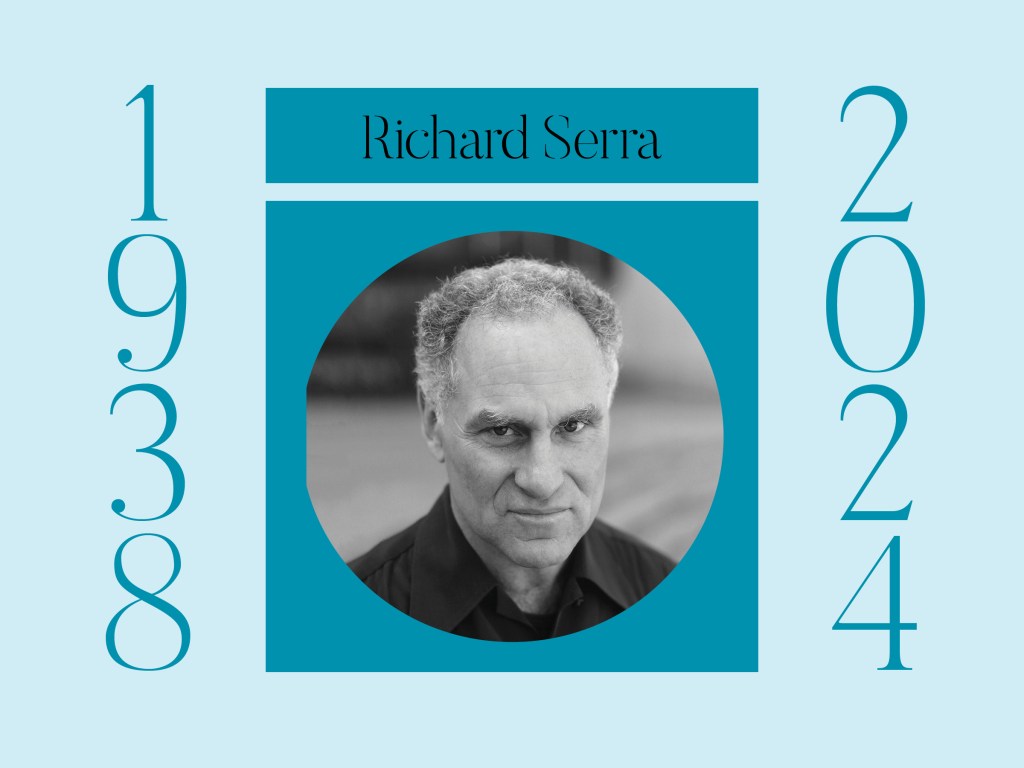During an evening of performances at The Kitchen in Lower Manhattan in 1974, Richard Serra had a friend read a story about his own childhood in San Francisco. When he was about five years old, his family moved from the city to the beach, where sand dunes marked his horizon. Serra was a mischievous child, so his father assigned him a daily task: to move a certain sand dune from one part of the terrain to another by the time he returned from work. Rather than resenting the task, Serra found a certain rhythm in performing the action—in scooping the sand, dragging it, and turning it over for hours at a time. “Do you think it’s in the right place?” his father would ask when he got home. “I don’t know … what do you think?” the child would say. To which his father responded: “I think you can move it a little bit to the right.”
After the procedure continued for several days, Serra realized the task was meant to make both father and son feel better about one another—and that he would have moved that sand anywhere. This autopoietic account summarizes one of Serra’s most important contributions to the history of art: to recast sculpture as a single action carried through until completion, while probing the relation between form and action, as well as what it takes to initiate action. The last part he most explicitly addressed in film and video works (1968–79) that looked at the physiology of muscle reflex and the structures of communication systems, mass media, social justice, and labor organizing.
Much later, in 2001, Serra’s artwork was the first to enter Dia Beacon, when the former Nabisco factory building was undergoing transformation into a museum in Upstate New York. Interior partitions were built around his sculptures, and a spiraling sequence of galleries devoted to Serra was designed to offer a variety of spatial experiences.
Vast volumes bathed in natural light are the norm at Dia Beacon, but walls closely frame the eight Serras on view. Two intimately sized rooms host Scatter Piece (1967) and Elevational Wedge (2001). For the first work, Serra poured hot rubber into pliable strips that are scattered on the floor around a taut line of string suspended some eight inches off the ground. The imaginary plane that the string conjures is a reminder of the fact that there is no such thing as an action in a vacuum—that casting sculpture is always a kind of relational performance. The tension between form and action returns in Elevational Wedge, a perplexing piece for which the floor was slanted downward in relation to an inclined sheet of steel that looks like a ramp even though it remains level with the rest of the ground. Look up from there and your eye meets a window framing the top of Union of the Torus and the Sphere (2001), a sculpture in which curved plates of steel, one concave and the other convex, rest on each other while calling to mind both the bow and the sail of a ship squeezed into the architecture. Close to that is Consequence (2003), a two-part wall-size drawing that plays with mass in relation to placement.
The sequence of Serra’s works culminates five steps down, in what was once the factory’s loading station. That’s where three many-ton Torqued Ellipses (1996–97) and the equally imposing 2000 (2000) quietly unfurl in a row. Dia Art Foundation commissioned the Ellipses in the mid-1990s and first showed them in an exhibition that opened in Chelsea in 1997. The twisting structures gave Serra the opportunity to work with a new sculptural form that provokes a constantly revolving, involuting experience. They continue to astonish viewers decades later—and surely will for many decades to come. Their scale is more than can be fully comprehended, and their materiality attracts a kind of bodily engagement that is entirely their own. Whenever I walk visitors through them, the effect is invariably one of disoriented awe.
Matilde Guidelli-Guidi is a curator, and curatorial department co-head at Dia Art Foundation.

